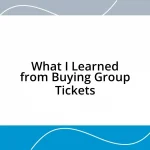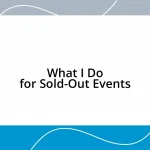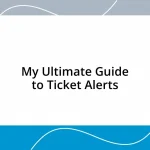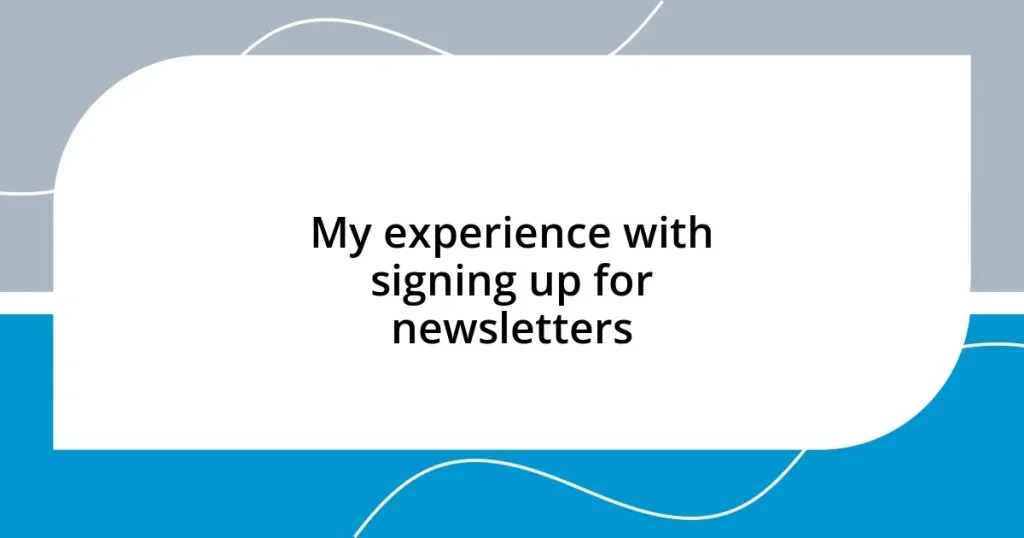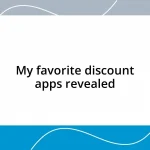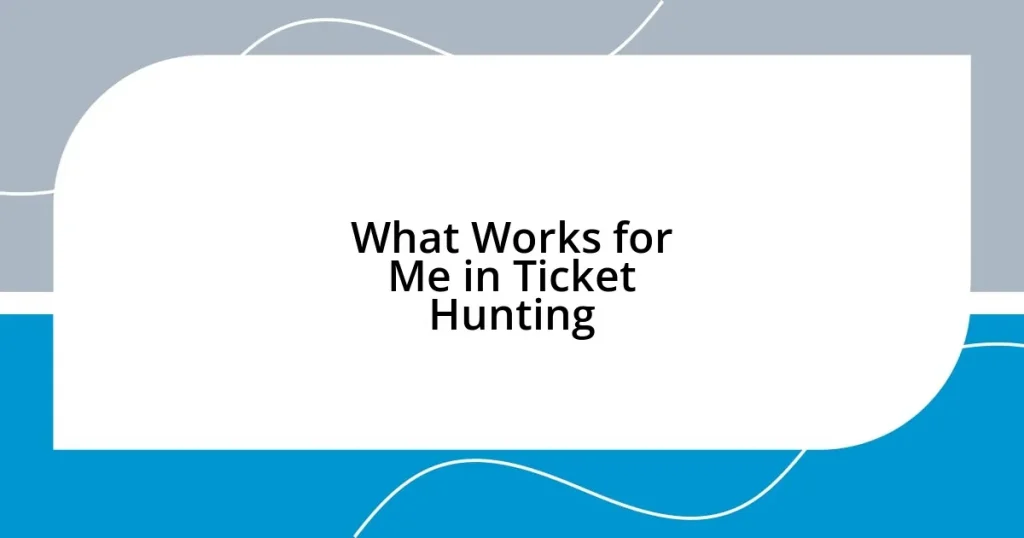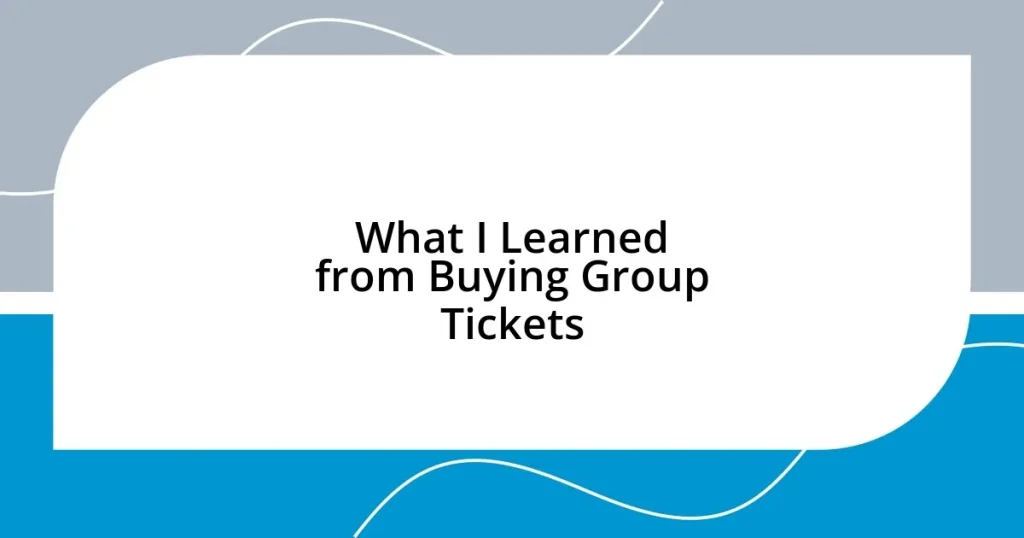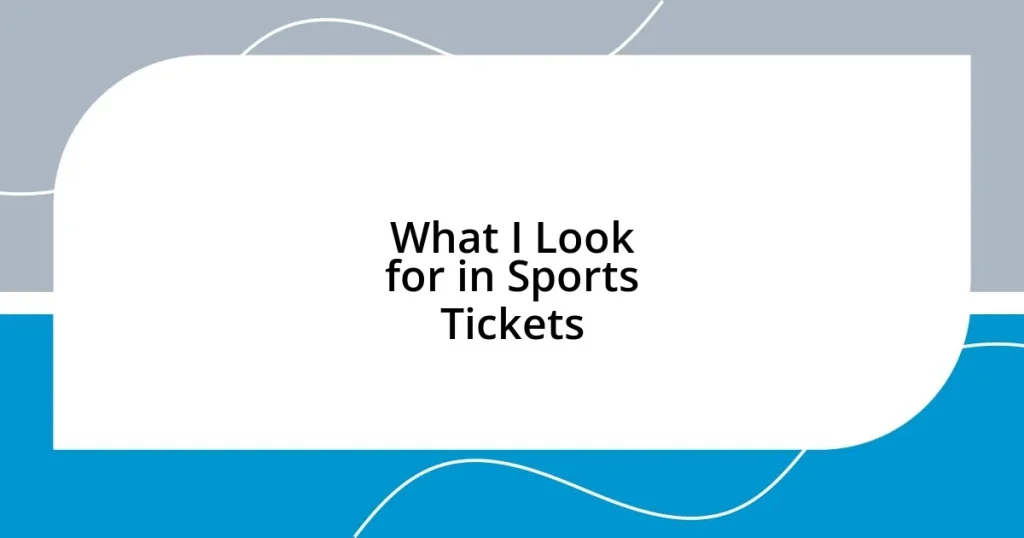Key takeaways:
- Be selective with newsletter subscriptions to avoid email overload; prioritize quality content that resonates with your interests.
- The sign-up process can vary, generally involving email confirmation and user interface experiences that affect usability.
- Manage newsletter preferences by unsubscribing, updating topics, and organizing emails to maintain an inspiring inbox.
- Designate specific times for reading newsletters and engage with the content to enhance the overall subscription experience.
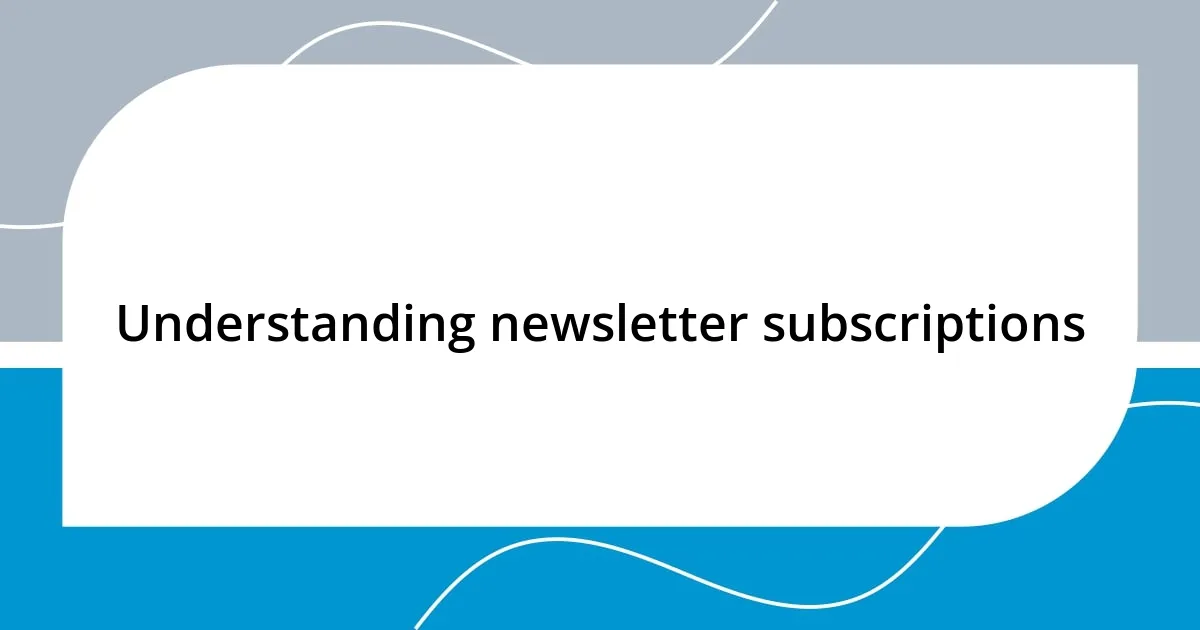
Understanding newsletter subscriptions
Newsletter subscriptions can feel both exciting and overwhelming. I remember the first time I signed up for a lifestyle blog’s newsletter; I was genuinely thrilled to receive expert tips right in my inbox. But, that initial excitement quickly turned to frustration when my inbox got cluttered with content I didn’t quite connect with.
As I dug deeper into various newsletters, I realized how they are curated to suit specific interests. Each newsletter is like a small window into a particular world, promising content tailored to the reader’s preferences. Have you ever found yourself eagerly awaiting an update from a brand or blogger you admire? There’s a sense of community that comes with being a subscriber, as if you’re part of an exclusive club.
However, it’s vital to discern which newsletters truly add value to your life. I once signed up for multiple newsletters out of curiosity, only to feel overwhelmed by the sheer volume of emails. This experience taught me the importance of being selective—finding those that resonate with my passions and offer genuine insight. How do you choose which newsletters to follow? Balancing quality over quantity can transform your inbox from a chaotic space into a source of inspiration.
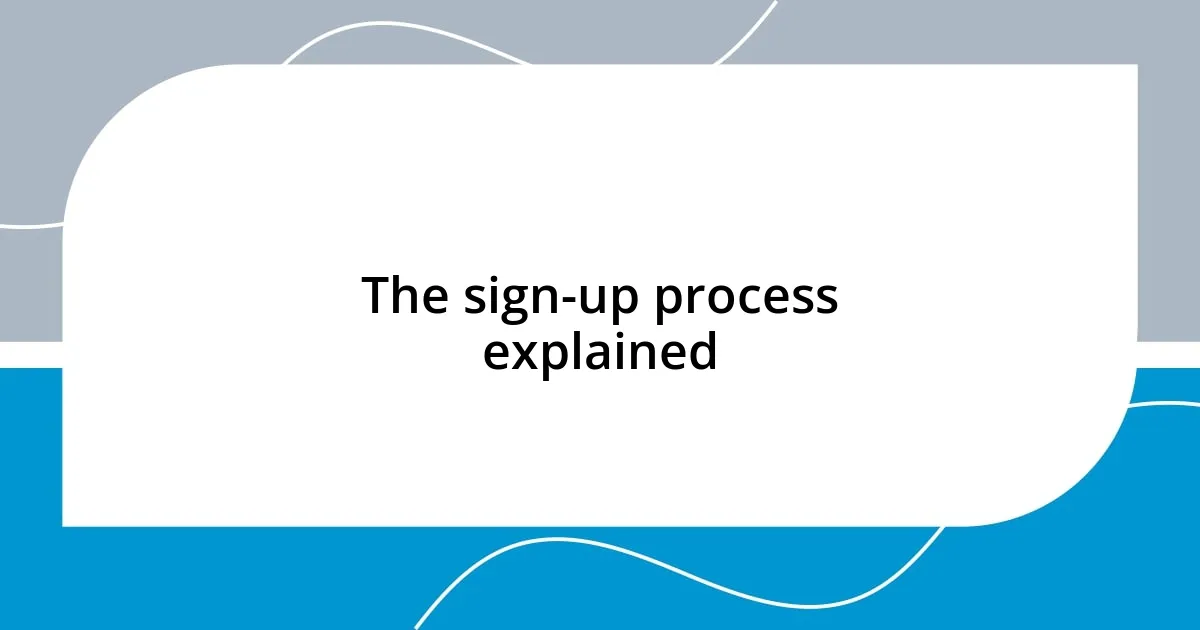
The sign-up process explained
The sign-up process for newsletters can vary significantly from one platform to another, but at its core, it usually follows a similar pattern. When I first signed up for a newsletter, the process was straightforward: I entered my email and clicked a button. However, what I didn’t expect was the follow-up verification email. That little step, while necessary, caught me off guard. It made me realize the importance of confirming my interest and helped ensure I truly wanted those eclectic updates in my inbox.
In my experience, the overall user interface plays a big role in how we perceive the sign-up process. Some websites make it a seamless journey, with minimal distractions and an inviting design. Others, however, can feel clunky and overwhelming, especially when they bombard you with multiple options or perks you didn’t ask for. I remember grappling with a pop-up that asked for my preferences before I even had a chance to understand what the newsletter offered. It left me feeling a bit lost, like I was being pushed into a commitment before I was ready.
While most newsletter subscriptions include a welcome email that presents the brand’s voice and sets expectations, it’s also common to encounter an immediate burst of promotional content afterwards. I felt a mix of excitement and dread the first time I received a flurry of emails post-sign-up. It was like opening a surprise package, only to find out it was filled with things I didn’t really want or need. That experience taught me to examine what I truly wanted from the sign-up process before jumping in headfirst.
| Aspect | Description |
|---|---|
| Sign-up simplicity | Some newsletters allow one-click subscriptions, while others involve multiple steps. |
| Verification | Most require email confirmations, enhancing security and ensuring interest. |
| User interface | The design can either invite you in or make you feel overwhelmed with choices. |
| Follow-up content | Welcome emails set the tone, but promotional bursts can feel like information overload. |
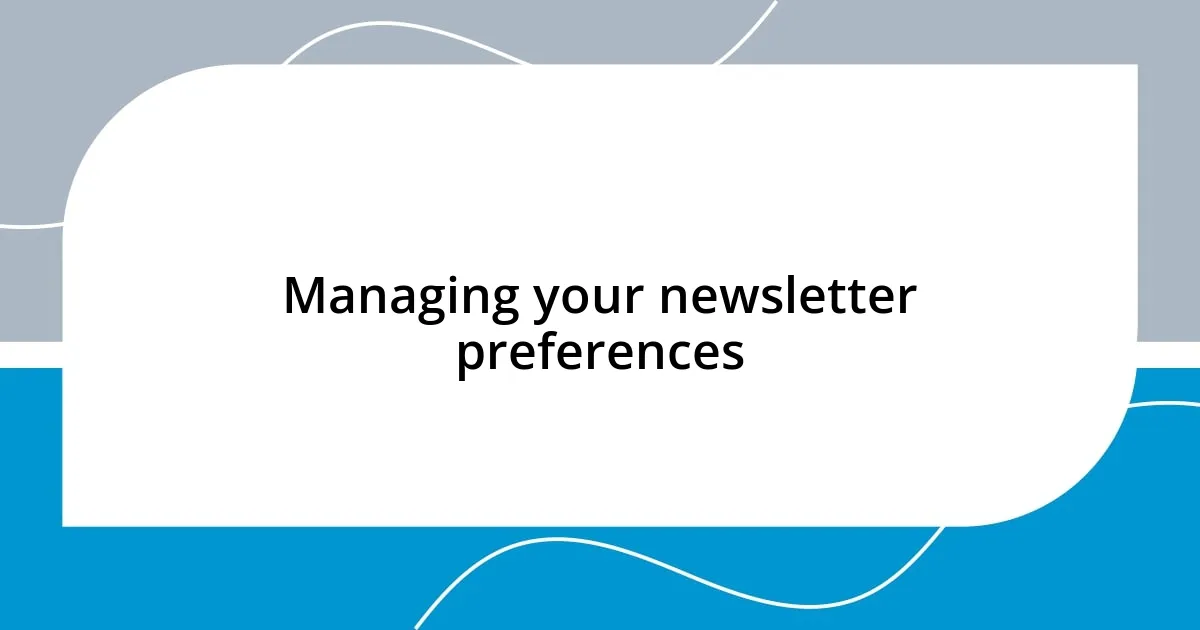
Managing your newsletter preferences
Managing newsletter preferences can feel like a juggling act. I learned this firsthand when my inbox became a minefield of unwanted emails. It’s surprising how a few clicks can lead to an overwhelming flood of content. I remember spending time trying to sift through those emails, only to realize that adjusting my settings was the key to reclaiming my inbox.
Here are some effective strategies to help manage your newsletter preferences:
- Unsubscribe: If a newsletter no longer sparks joy, don’t hesitate to hit that unsubscribe button.
- Update preferences: Look for customization options. Many newsletters allow you to choose the topics you’re most interested in.
- Frequency control: Adjust how often you receive emails. Some newsletters offer options for daily, weekly, or monthly digests.
- Folder organization: Create specific folders in your email for categories like promotions, updates, or inspirations to sort your incoming content.
- Use filters: Set up filtering rules to automatically categorize or flag emails, keeping your inbox organized and manageable.
By actively managing these preferences, you’ll find it easier to stay connected to the newsletters that truly resonate with you while minimizing that overwhelming clutter.
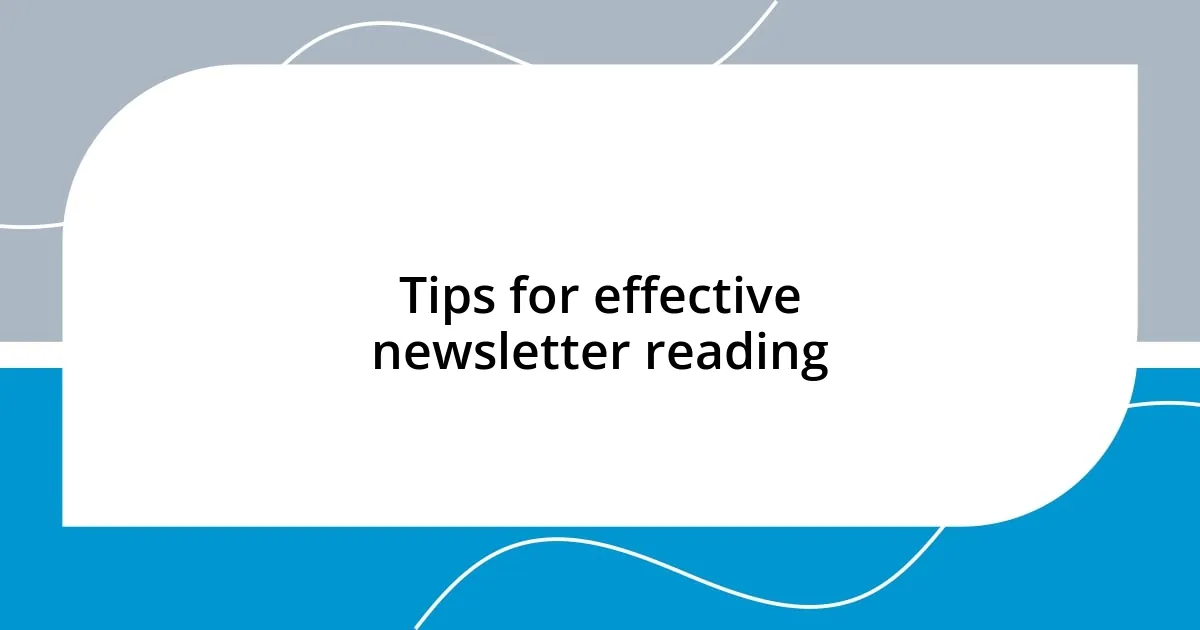
Tips for effective newsletter reading
To truly make the most of your newsletter reading experience, I’ve found that setting aside specific time slots each week really helps. When I first started subscribing to multiple newsletters, I was overwhelmed by the influx. I decided to carve out 30 minutes every Saturday morning to dive into my favorites. This way, I could enjoy the content without feeling rushed, transforming a chaotic email flood into a relaxing ritual. Have you considered designating a specific time for your newsletter reading?
Another effective strategy is to skim through the subject lines before diving deep. Sometimes, I find that a title will catch my eye, while others can just fade into the background noise. By quickly scanning the subject lines, I can prioritize what feels most relevant or exciting in that moment. For instance, I remember reading an enticing subject about a new recipe that sparked my creativity for dinner ideas, while other updates on sales went straight to my designated folder. How do you filter what needs your immediate attention versus what can wait?
Finally, don’t shy away from engaging with the content. I often reply to newsletters or participate in polls and surveys when they pop up. This interaction not only makes me feel more connected to the brands I subscribe to but also allows me to share my preferences directly. Plus, I’ve found that many newsletters welcome feedback enthusiastically, which can lead to more tailored content in the future. Have you ever thought about how simple interactions can enhance your subscription experience?
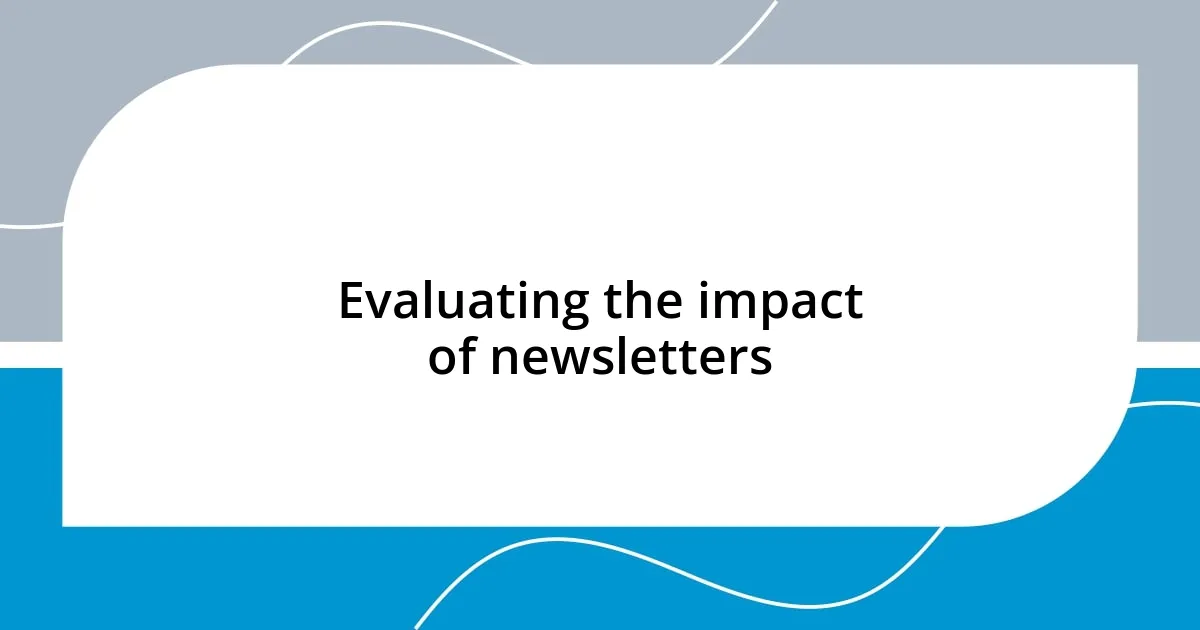
Evaluating the impact of newsletters
When evaluating the impact of newsletters, it’s fascinating to see how they can shape our perceptions over time. For me, subscribing to a few well-crafted newsletters has genuinely transformed my understanding of certain topics. I once stumbled upon a weekly newsletter that featured expert opinions and in-depth analyses, making me feel like I was part of an informed community. Have you ever felt that surge of excitement from a newsletter that seemed to speak directly to your interests?
On the flip side, I also realized that not all newsletters have the same effect. I’ve found some that were just filled with promotional content, hardly providing any value. The disappointment can be palpable. It makes me wonder: how many people stick with subscriptions that don’t enrich their lives? That feeling of frustration has driven me to unsubscribe more often, filtering out the noise to focus on content that truly resonates with my passions.
Moreover, tracking the impact of my favorite newsletters on my daily life has revealed their power to inspire action. I remember reading a newsletter about time management strategies and, inspired by its insights, implemented a new routine that significantly boosted my productivity. It’s intriguing how a simple email can lead to tangible changes in our habits. Have you noticed how certain newsletters spark motivation and even drive you to take that next step in your personal growth?


